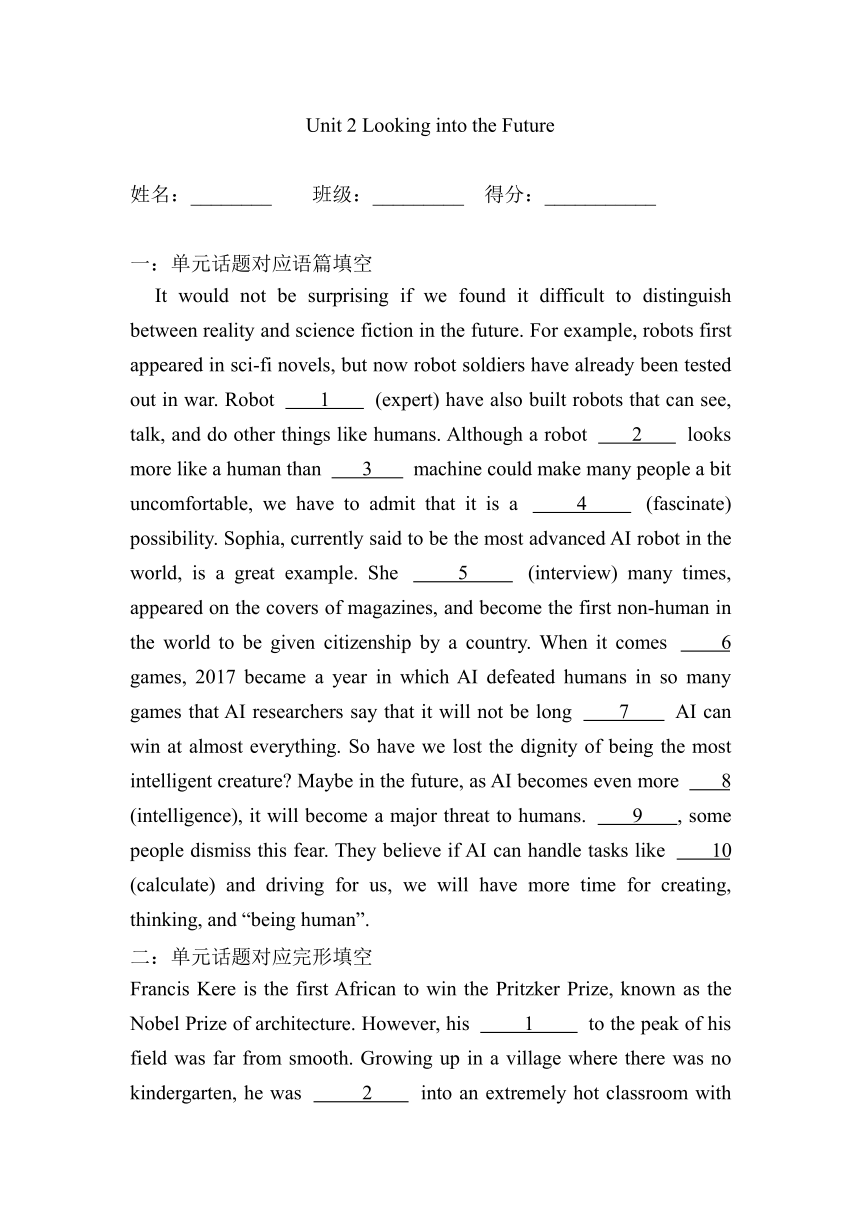
Unit 2 Looking into the Future 姓名:_____ 班级:_____ 得分:_____ 一:单元话题对应语篇填空 It would not be surprising if we found it difficult to distinguish between reality and science fiction in the future. For example, robots first appeared in sci-fi novels, but now robot soldiers have already been tested out in war. Robot 1 (expert) have also built robots that can see, talk, and do other things like humans. Although a robot 2 looks more like a human than 3 machine could make many people a bit uncomfortable, we have to admit that it is a 4 (fascinate) possibility. Sophia, currently said to be the most advanced AI robot in the world, is a great example. She 5 (interview) many times, appeared on the covers of magazines, and become the first non-human in the world to be given citizenship by a country. When it comes 6 games, 2017 became a year in which AI defeated humans in so many games that AI researchers say that it will not be long 7 AI can win at almost everything. So have we lost the dignity of being the most intelligent creature Maybe in the future, as AI becomes even more 8 (intelligence), it will become a major threat to humans. 9 , some people dismiss this fear. They believe if AI can handle tasks like 10 (calculate) and driving for us, we will have more time for creating, thinking, and “being human”. 二:单元话题对应完形填空 Francis Kere is the first African to win the Pritzker Prize, known as the Nobel Prize of architecture. However, his 1 to the peak of his field was far from smooth. Growing up in a village where there was no kindergarten, he was 2 into an extremely hot classroom with over 100 students. At the age of 7, Francis Kere had to leave his family home to attend school because his village didn’t have one of its own. This 3 of poor building facilities contributed to his vision of better educational lives of local children, using architecture. Thirteen years later, he boarded a plane for Germany on a scholarship to study architecture. His early reputation came in helping 4 a school in his village after graduating from college. He 5 the whole village to provide ideas and drew the 6 on sand for all to see. 7 , he involved them in constructing the school, using local wood and local clay (黏土). The result of their hard work was a welcoming structure with a “floating” roof that 8 ventilation (通风) in a hot climate and wall openings that bring 9 for students to learn even without electricity. He showed the villagers that ideas to 10 climate or other challenges are always at hand. In this process, local people learned 11 skills that they could later use to find work. By cooperating with them, Kere 12 the idea that climate solutions started with big institutions. He 13 that everyone could contribute to addressing the major issues related to education and climate and 14 a global impact by acting locally. Adopted by architects in dozens of countries, his 15 is rooted in the “unique” aspects of each community now. 1.A.angle B ... ...
~~ 您好,已阅读到文档的结尾了 ~~